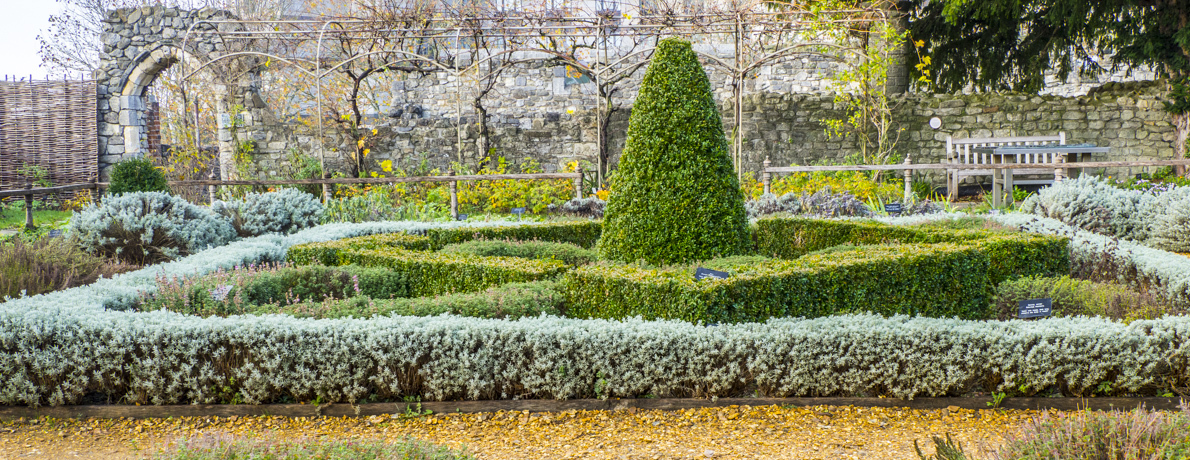
I visited Southampton because I was curious about its latest attraction, Gods House Tower. Not only did I find an innovative mixture of art and culture at this tower but enjoyed some other very pleasant surprises. The Pig in the Wall is probably the most inviting hotel I have ever stayed in and Southampton Old Town was a delight to explore.
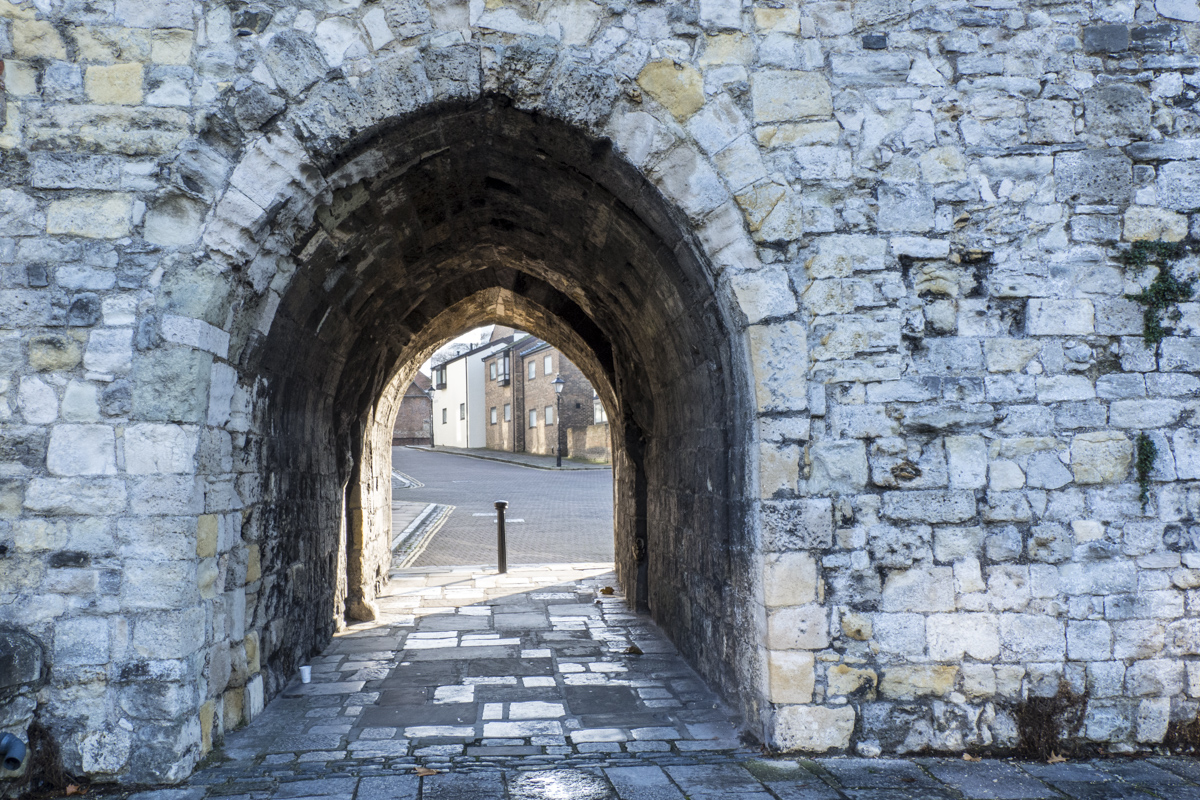
For many Southampton in Hampshire, England is simply a cruise terminal. But, just a short distance from its massive port, visitors will find a wealth of history and culture in Southampton’s Old Town. As my hotel was actually a part of the old walls and appropriately named The Pig in the Wall I started my day strolling along the Western Esplanade. During the middle ages the walls to my right were actually on the sea front. When doctors prescribed salt water bathing as a cure for many illnesses Southampton became a fashionable place to visit from the mid-eighteenth century. This area, at the end of Simnel Street, was home to Mr Martin’s Baths and the Assembly Rooms. The latter provided evening entertainment including dancing and card games for visitors to the town. In those days Southampton Castle would have towered above the defensive walls.
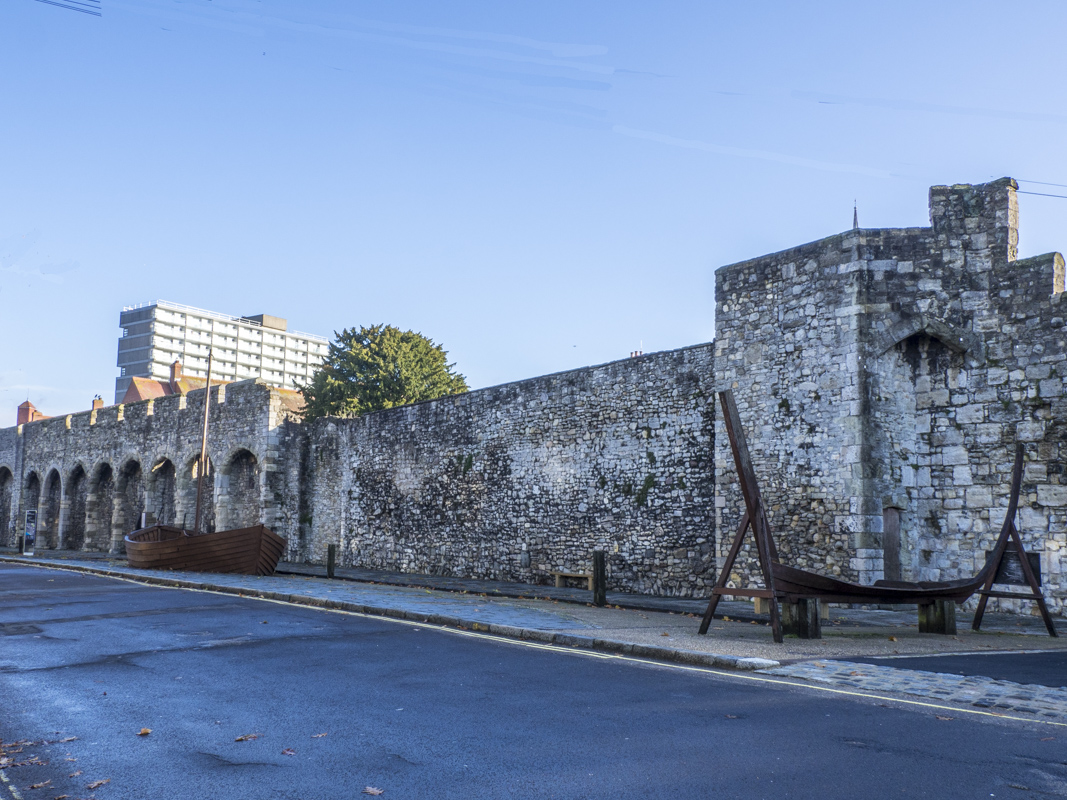
Southampton Castle in Southampton
The original Southampton Castle was built after the Norman conquest of 1066. The King and his court would stay here on their way to France. This castle had a toilet called the garderobe tower that was built in the late fourteenth century at the south-west corner of the castle. The tower was originally three stories high and the toilet facilities were on the ground and first floors. These drained into the sea via a sluice which was flushed clean by the tide. The tower along with the adjoining town wall was demolished in the late nineteenth century. By then the rest of the castle which had been rebuilt in 1805 had also been demolished. Residential flats now occupy the site of the castle. Very little remains of the castle today, just enough to define the extent of the building and its defences. There are the ruins of the late fourteenth century drum towers that once flanked the main gateway to the medieval castle. They were added to the castle’s defensive bailey wall. The last surviving section of the outer Castle Bailey wall forms one side of a parking area near the drum tower ruins. Originally, the arches would have been hidden by a bank of earth fronted by a wide defensive ditch in front. The upper level of the wall is built from a better quality stone indicated where it would have risen above the bank. I entered the Old Town through a stone arch at the bottom of Blue Anchor Lane that leads to the Tudor House and Garden. This stone arch is a part of the town walls and its portcullis slot can still be seen.
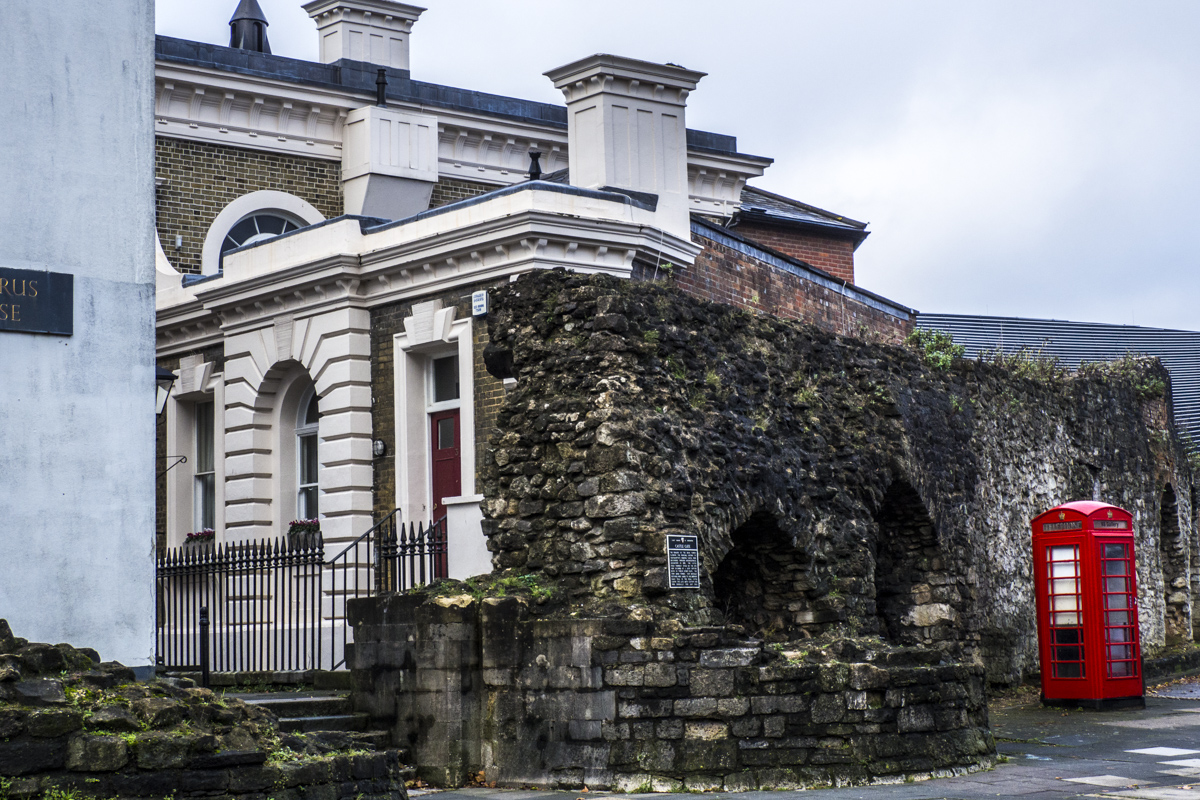
The Tudor House and Garden in Southampton
During the middle ages Blue Anchor Lane led from the medieval quayside into the town and the market in St Michael’s Square. This lane was used to take imported goods from the quayside into the medieval town and the market in St Michael’s Square. In medieval times, St Michael’s Square was a busy fish market selling freshly caught eels, mackerel, whiting and oysters. It was also the site of the Cloth Hall which was built around 1400. Wool was sold on the top floor and the fishmongers traded on the ground floor. In 1634, the hall was taken down and rebuilt next to the Westgate and is now known as Westgate Hall. Its foundations can still be seen in the paving in front of St Michael’s Church. Thought to have been built around 1070 this church is the oldest building in Southampton. It was the Civic Church until 1835 where the mayors of the town were sworn in at Michaelmas. Of the parish churches in the centre of the town this was the only one to escape destruction during the Second World War. Today this square is dominated by the iconic Tudor House and Garden.
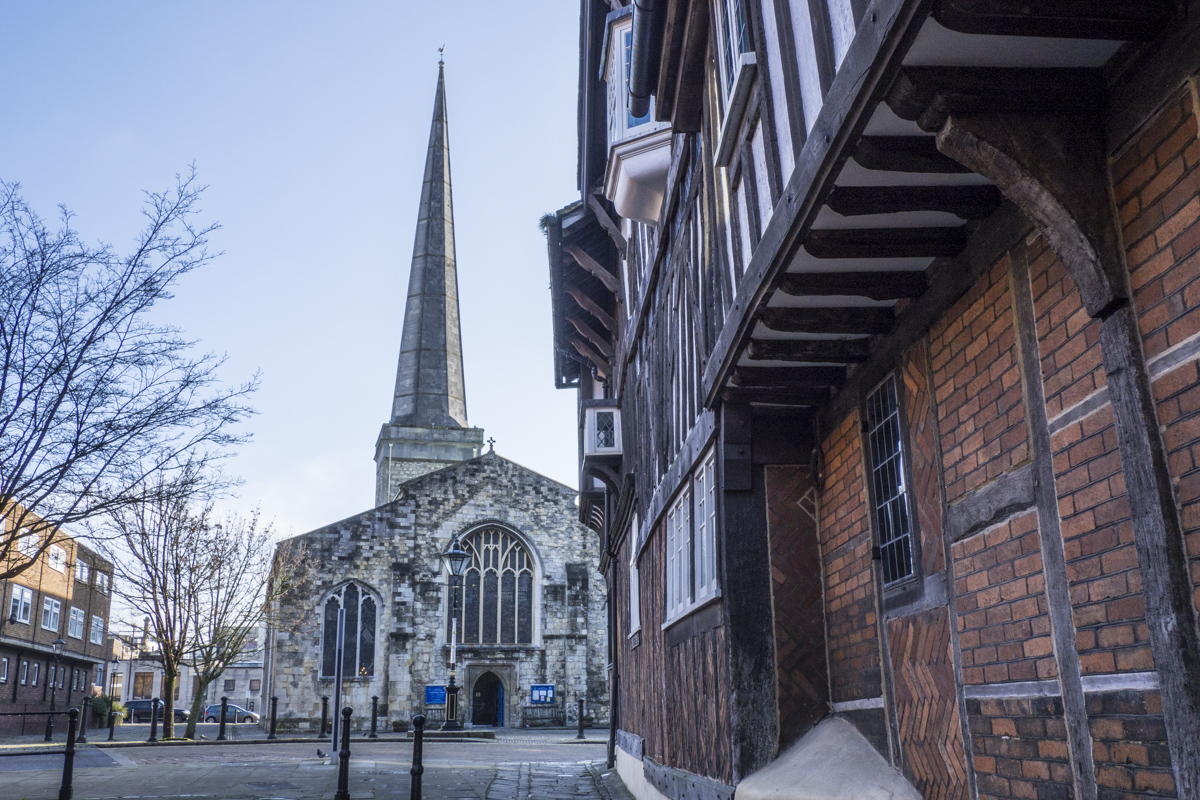
This amazing house has an eight-hundred-year history and has been a museum since 1912. The house was built around 1492 on the site of three earlier buildings. The house and garden underwent an extensive restoration and refurbishment in 2010 and offers visitors an interesting insight into life in Southampton during the Tudor period. This house is one of the town’s most important historic buildings. Walking through the rooms on two floors visitors will discover more about the different occupants of the house since John Dawtrey built it. It has been home to a lawyer, an artist and a Victorian bonnet-maker. A story told through permanent and temporary exhibitions. Guided tours are available to visit the cellars (air raid shelters during the Second World War) and the attic. In the attic visitors will see a sedan chair and a penny farthing bicycle as well as being able to appreciate some of the oldest fabric of the building.
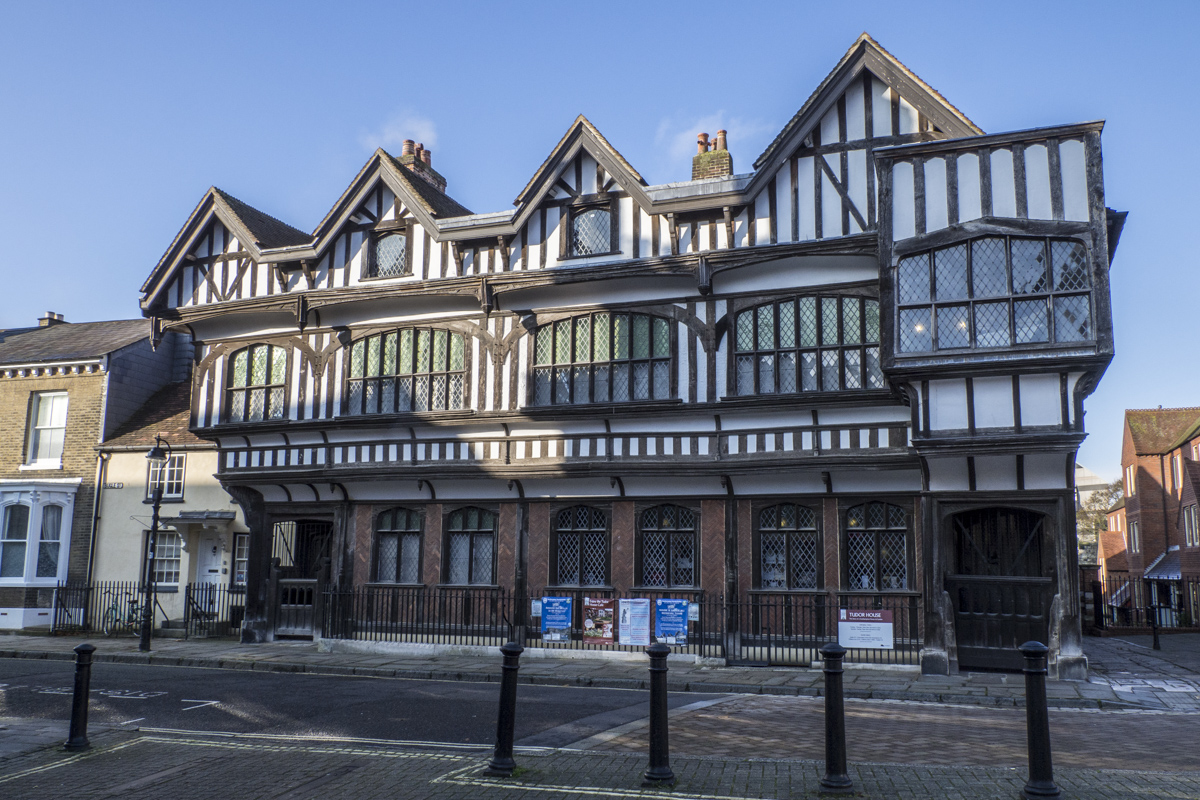
The garden behind the Tudor House has undergone many changes over the years as various residents have used it for different purposes. It has been a formal garden, a vegetable patch, part of a dye works and a place to dump rubbish. In Tudor times gardens were a status symbol and would be planted with both decorative plants and those used to flavour food or treat illnesses. Bees were sometimes kept in a bee bole, a small alcove in the wall. And there is one here inside the cafe. A Tudor knot garden has been re-created at the Tudor House and represents how it may have looked during the 1500s. These gardens had formal pathways and low hedges forming an intricate, symmetrical knot design interwoven with plants. The house that John Wytegod built is on the far side of this garden.
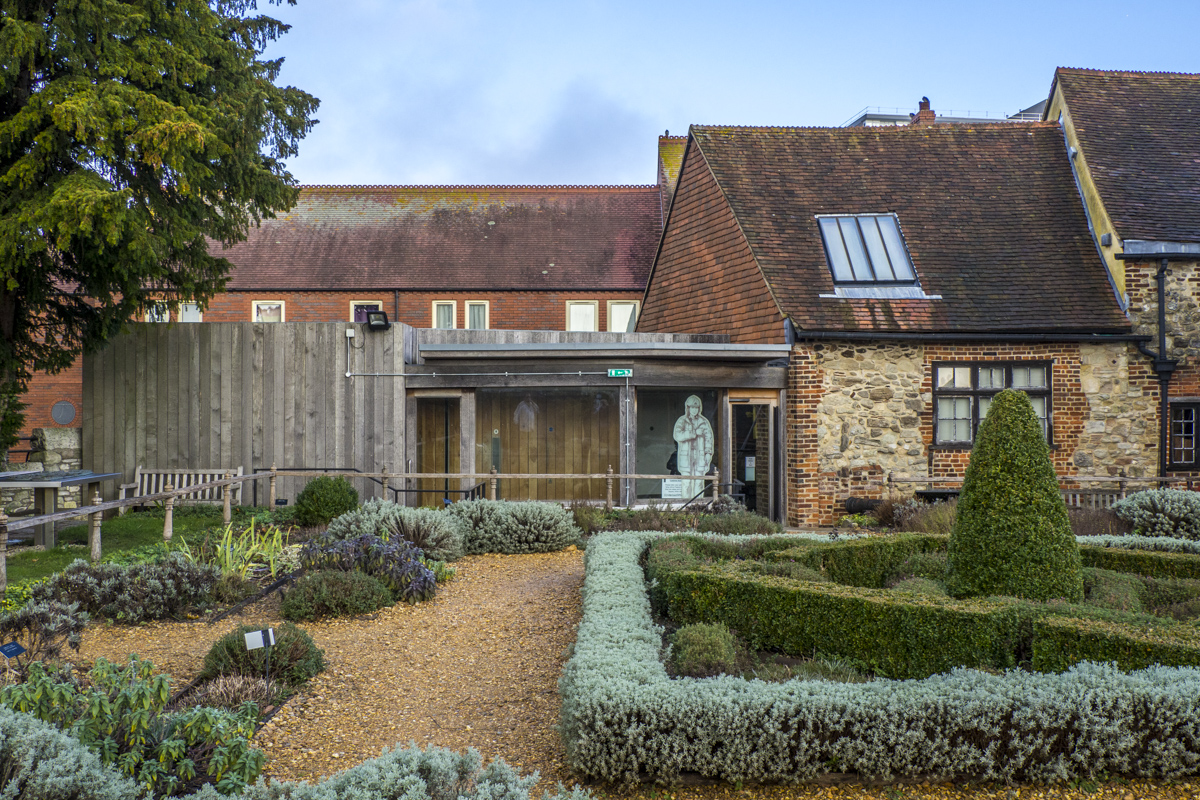
The house, known as King John’s Palace was the first house to be built on this site. It was built by John Wytegod a wealthy merchant who owned several properties in the town. Now in ruins, this fine stone house is still one of the best examples of Norman architecture in England. When the house was built on the quayside in 1180, Southampton was already an important port. The house had two storeys. The living quarters with large windows and a fireplace were on the first floor. Casks of wine imported from France were unloaded at the quayside at the front of the house and stored on the ground floor. After the French attacked Southampton in 1338 a huge, defensive wall was built around the town on the orders of King Edward III.. The house became a part of that defensive wall and its front door and windows were blocked with stone. During the eighteenth century this house was used as a coach house and stables. In the nineteenth century it became a coal merchant’s business. At the beginning of the twentieth century it housed a private museum of the then owner, Mr Spranger. Today, following the removal of the roof at the beginning of the twentieth century it is now just a shell. As for the name this came about through the mistaken belief that King John stayed in the building at the beginning of the thirteenth century. After my visit to the Tudor House I headed for the Town Quay and lunch at the historic Wool House.
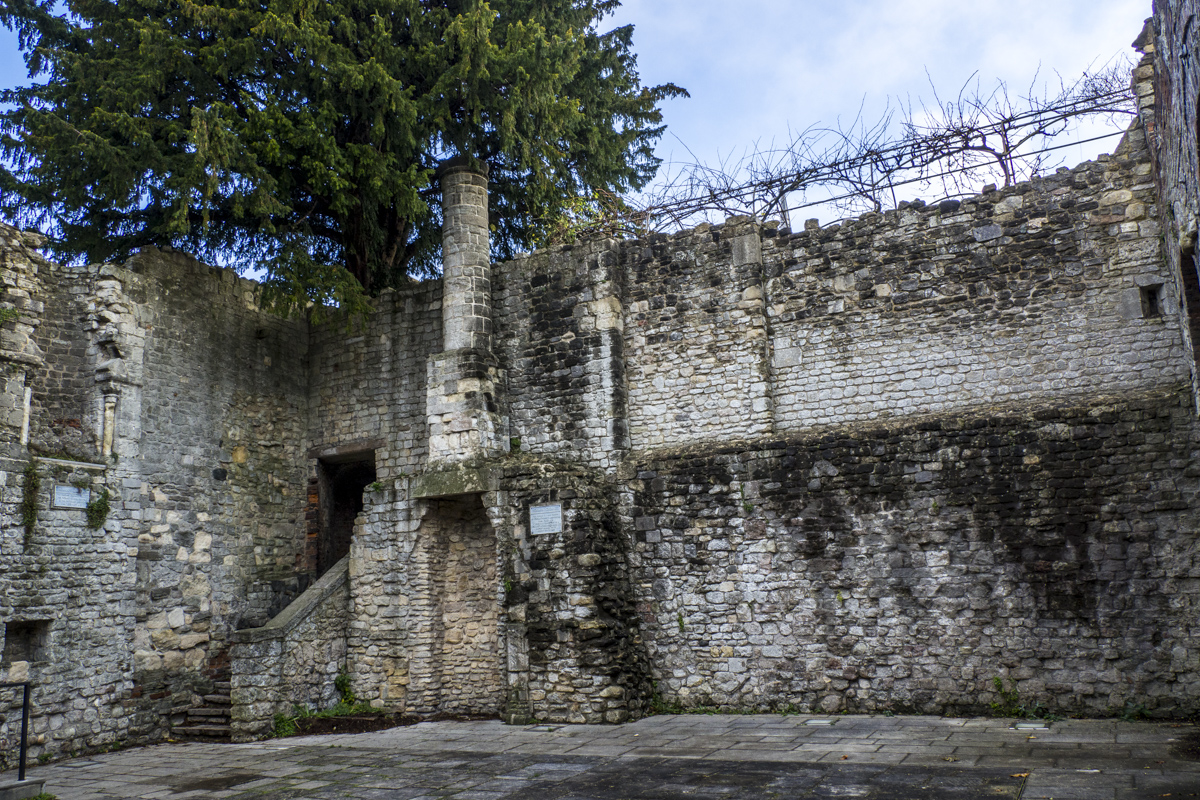
The Town Quay and the Wool House in Southampton
The original Town Quay was built during the middle ages when wool was the largest export from Southampton. Today this area is the site of remnants of the old city walls enhanced by the Town Quay Park that surrounds it. But one historical building remains intact here, the medieval Wool House. It was built by Cistercian Monks from Beaulieu Abbey after the French raid in 1338. For the next three hundred years it was mainly as a storehouse for wool waiting to be exported to Europe and products for dyeing cloth. During the Napoleonic wars it was a prison for French prisoners of war. Some of their names can still be seen carved on the beams of the roof. After that the building had a variety of owners and different uses. It remained relatively unaltered apart for the hipped front which was reconstructed in the eighteenth century. In 1953 it became a Grade I listed building. From 1966 to 2011 it was part of the Southampton Maritime Museum. When it became empty again the Dancing Man Brewery successfully applied to open the building as a tourist centre, microbrewery and restaurant. I had lunch here and chose the pie of the day – chicken, ham and leek. It was superb. Freshly cooked and accompanied by a selection of green vegetables, creamy mash potato and a succulent gravy it was a meal to savour. Next stop, God’s House Tower a short distance further along the Town Quay.
I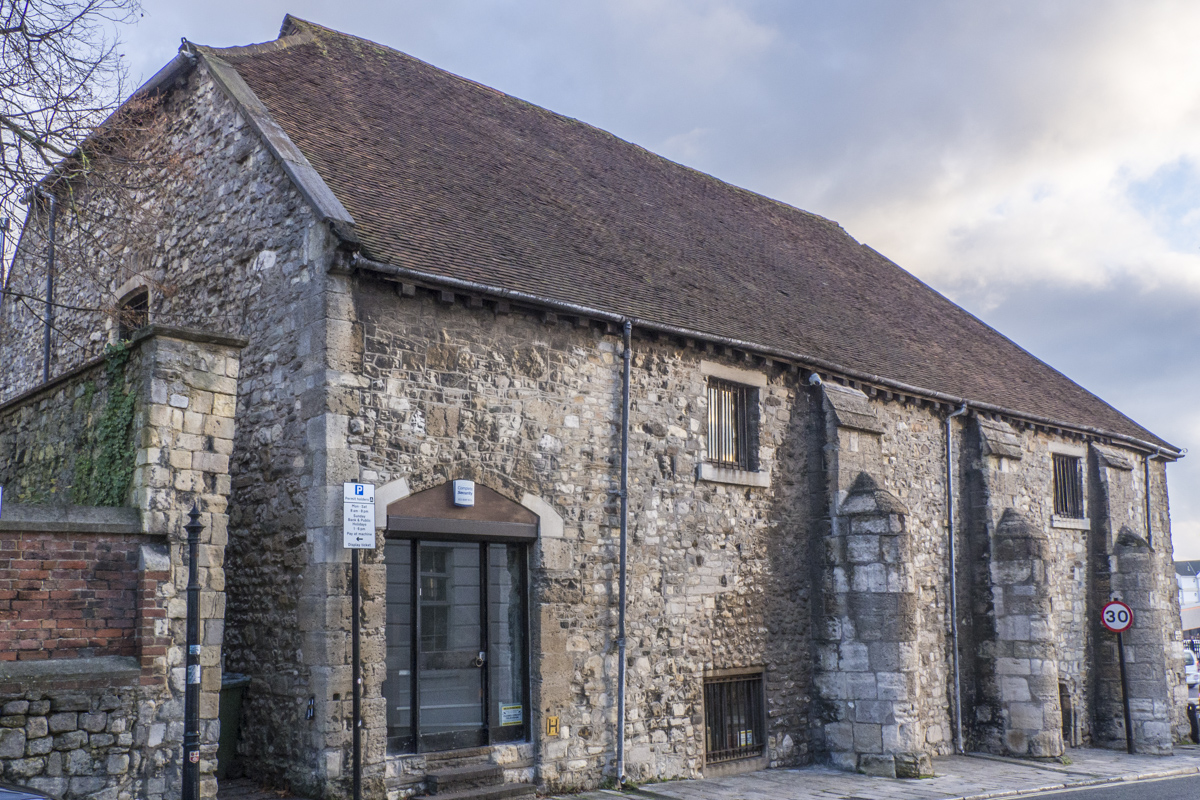
God’s House Tower in Southampton
God’s House Tower is the latest and most ambitious project of the organisation a space arts. God’s House Tower named after the God’s House Hospital, has been transformed into a unique and very stylish cultural space. Visitors can enjoy an unusual presentation of the town’s history surrounded by a variety of visual arts. It was good to see such a monumental building being put to such good use. The aroma of freshly baked pastries and bread in the café run by Hoxton’s was very welcoming – and very tempting. The café and some of the rooms on the ground floor do not incur an entrance fee.
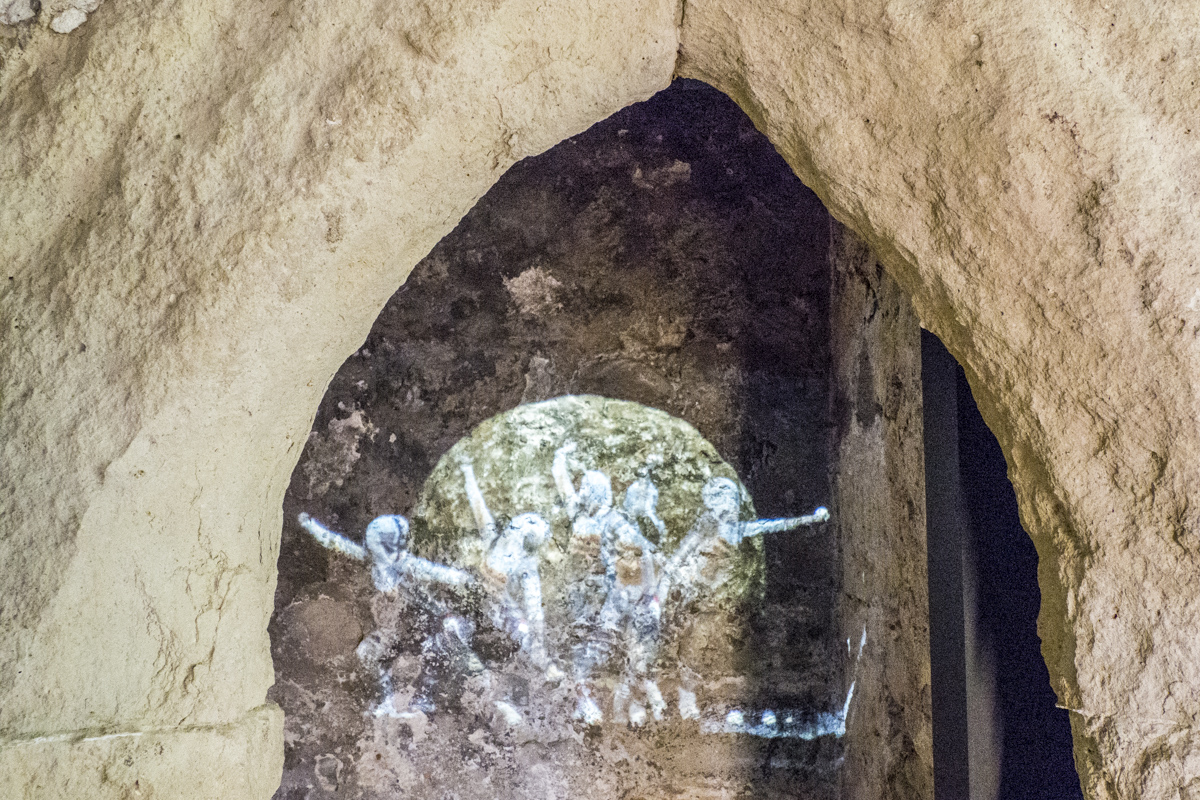
This tower was an important part of the medieval town’s defences. The town gunner lived here and the town’s armoury was stored here. When the guns were needed they were hauled up through the tower. Gun ports, shaped like upside down key holes are visible throughout the building. Cleverly incorporated in this town was a sluice gate that allowed water to flow into the town ditch at high tide. This water could be retained as a defence if an attack was imminent. In the 1780s this building was used as the town’s prison. Close to the tower is Friary Gate. After Franciscan friars settled here in 1224, the Greyfriars, as they were known, were a regular sight in the medieval town, preaching and caring for the poor, infirm, aged and outcast. They were also responsible for introducing a piped water supply to the town.
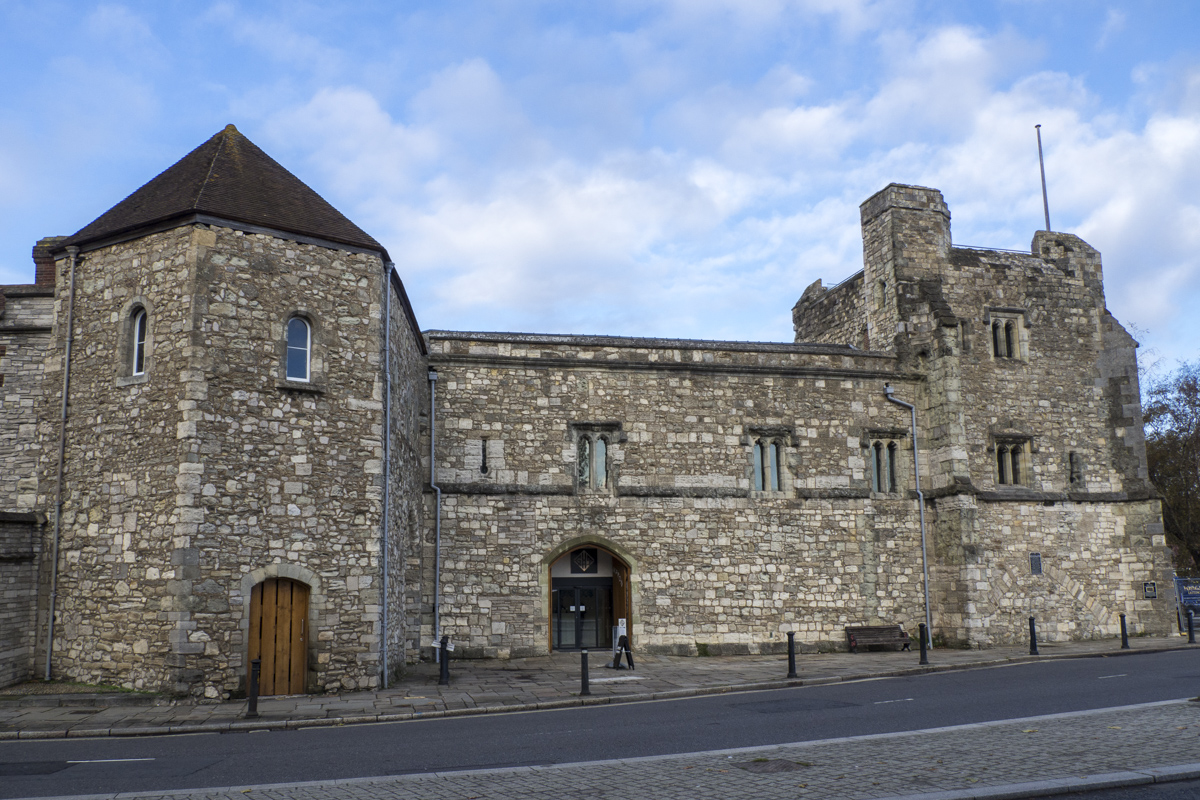
The Town Walls of Southampton
Sections of the town walls have been made accessible to the public and they are linked by a walking trail through the old town. This walk starts at the main gate, the impressive Bargate that was built in Norman times to both defend from intruders and impress visitors. Once part of the original Norman walls today it is a stand-alone monument. These huge walls were built to defend the town from attacks by land.
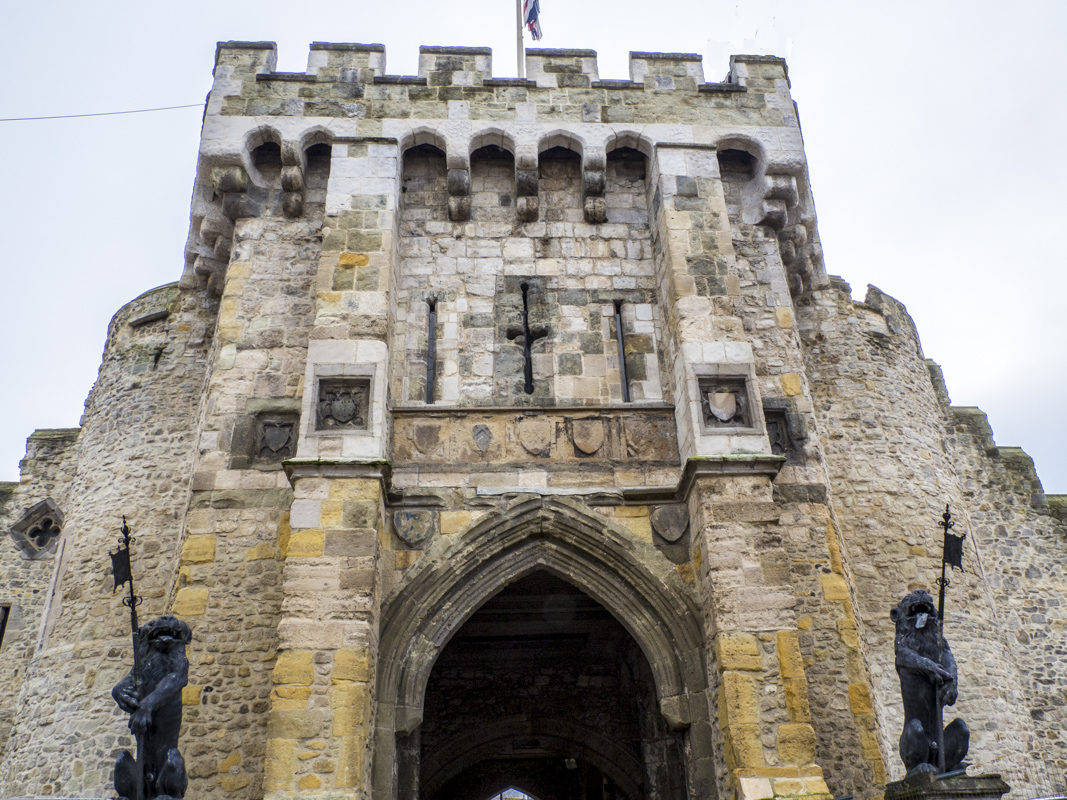
But, one quiet one quiet Sunday morning in October 1338, when everyone was in church, fifty ships silently entered Southampton harbour. French and Genoese soldiers and mercenaries raided the town. King Edward III was furious when he heard his wine had been stolen from the Castle Vault on the quayside that he ordered the town to build a new wall to prevent any more attacks. These new walls changed the face of the town. Merchants like John Wytegod were forced to block up the entrances to their quayside warehouses and homes and to build the defensive arcades that can still be seen today. A designated route with information boards tells the story of these walls with snippets about individual residents and legends. A fascinating stroll through bygone days.
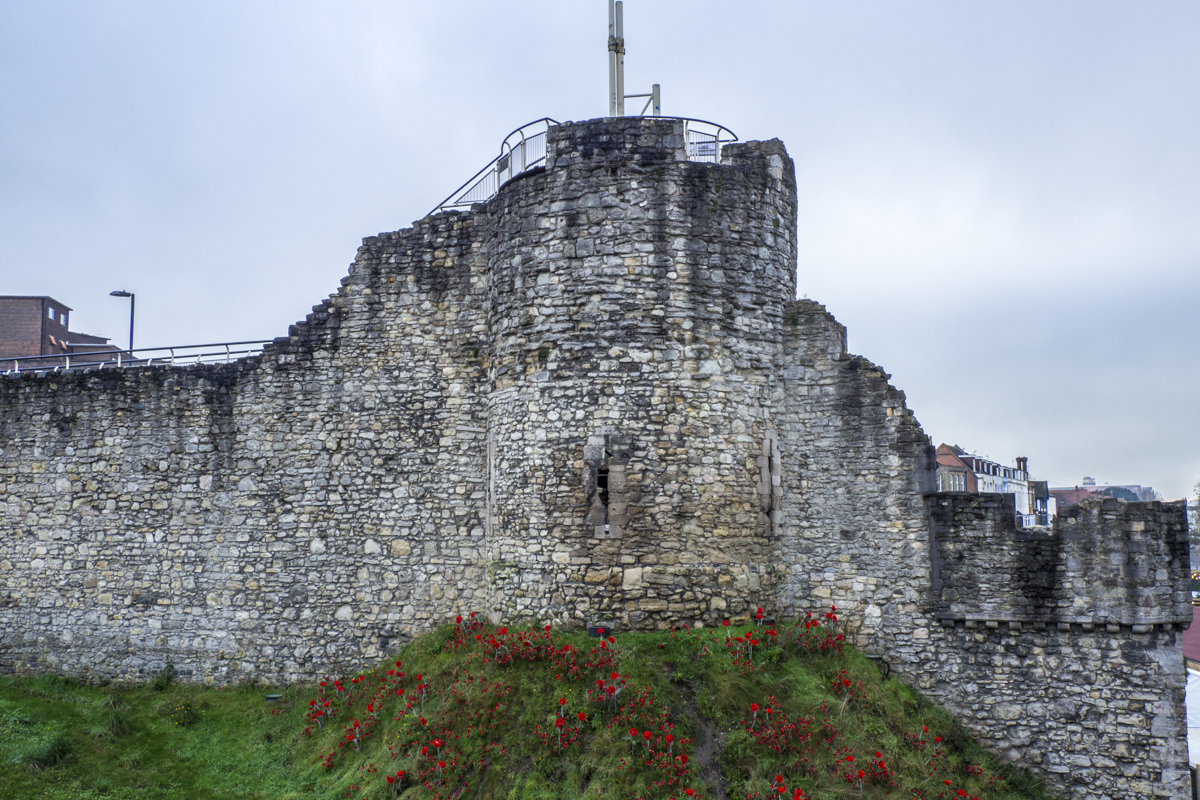
Where to Stay in Southampton
The Pig in the Wall is ideally situated in the town walls of Southampton. The service here is seriously good but with an air of frivolity regarding the pig theme – a pig by the door, gingerbread pigs and a funny postcard in my room. A room that was cosy and had everything I needed including a large bath to wallow in while watching television. And the large comfy bed ensured a good night’s sleep. All meals are taken in The Deli, a very informal and comfortable setting. It also lived up to its name with a great choice of chose it yourself food. My dinner was lovely and I particularly enjoyed being able to create my own dessert from the deli counter. I immediately felt at home here and enjoyed every aspect of my stay – in particular the friendly and attentive service.
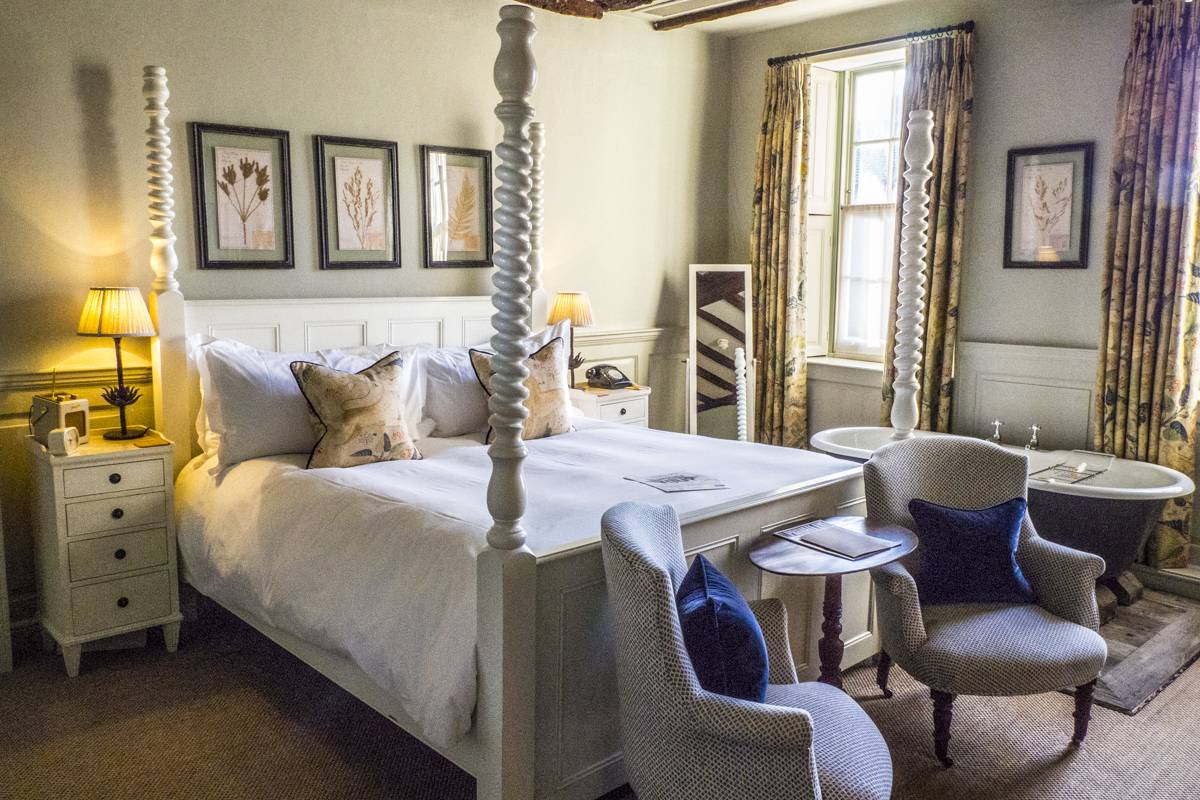
Available on GPSmyCity.com
This article is now featured on GPSmyCity. To download this article for offline reading or travel directions to the attractions highlighted in this article, go to Walking Tours in Southampton on GPSmyCity
This article is based on the personal experience of Valery, an ExperiencedTraveller.